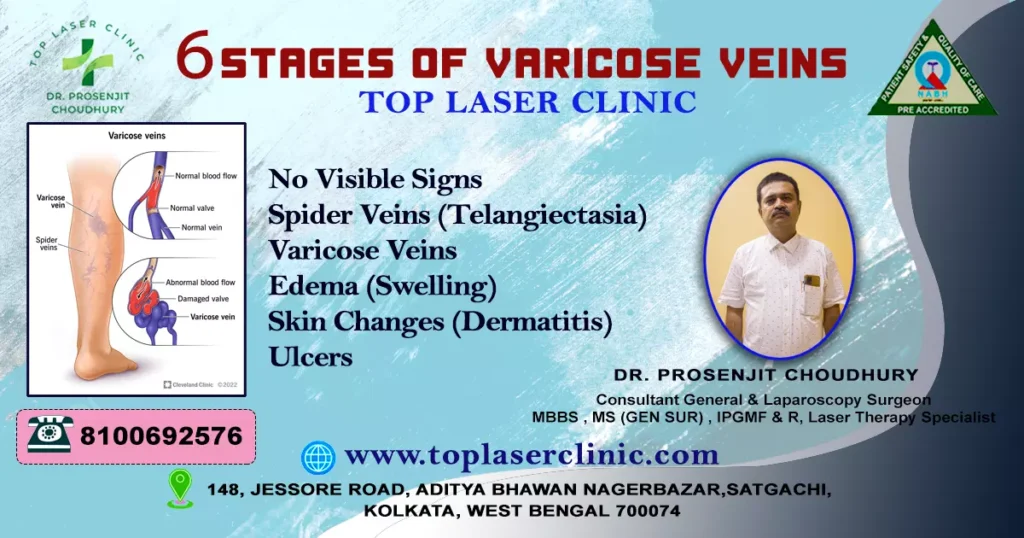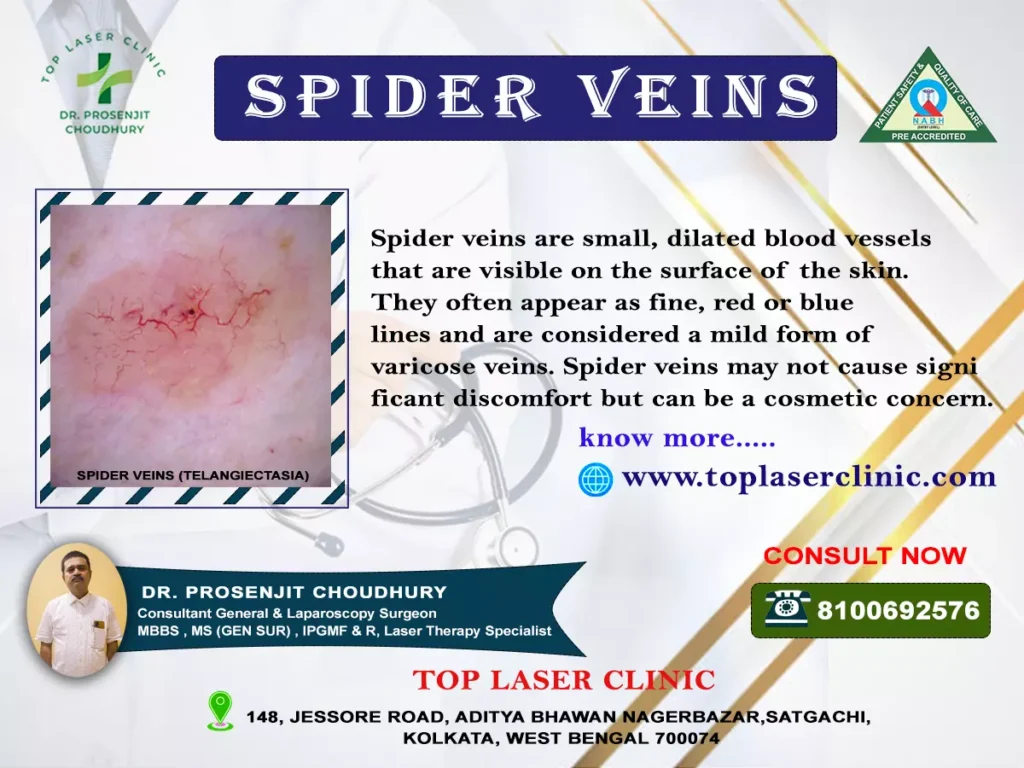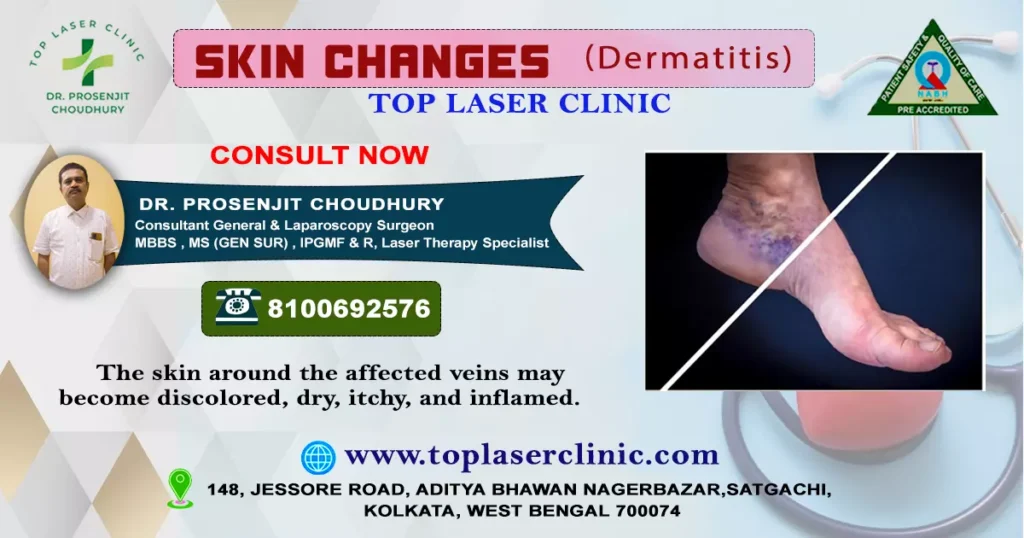
Table of Contents
Varicose veins are often classified into different stages based on their severity and appearance. Varicose veins can be classified into six stages according to the CEAP classification system.
The classification system used for varicose veins typically ranges from Stage 0 to Stage 6, indicating the progression of the condition. It’s important to note that not all classifications may be universally used, and different healthcare providers might use slightly different terminology or criteria.
Here’s a general overview of the stages of varicose veins
1st. Stage of varicose veins
0 – No Visible Signs:
At this stage, there are no visible varicose veins, but individuals may experience symptoms such as discomfort, swelling, or aching in the legs, especially after prolonged periods of standing or sitting.

2nd. Stage of varicose veins
Spider Veins (Telangiectasia):
Spider veins are small, dilated blood vessels that are visible on the surface of the skin. They often appear as fine, red or blue lines and are considered a mild form of varicose veins. Spider veins may not cause significant discomfort but can be a cosmetic concern.
3rd. Stage of varicose veins
2 – Varicose Veins:
In this stage, larger veins become visibly twisted, swollen, and raised above the skin’s surface. These veins are often bluish or dark purple in colour. People with Stage 2 varicose veins may experience mild discomfort, heaviness, or achiness in the legs.
4th. Stage of varicose veins
3 – Edema (Swelling):
Swelling, or edema, becomes more noticeable at this stage. The legs may feel heavy, and the swelling may worsen as the day progresses. Skin changes such as pigmentation, eczema, or inflammation may also develop around the affected veins.

5th. Stage of varicose veins
4 – Skin Changes (Dermatitis):
The skin around the affected veins may become discolored, dry, itchy, and inflamed. This stage is known as venous dermatitis or lipodermatosclerosis. Skin changes indicate a more advanced form of venous insufficiency.
6th. Stage of varicose veins
5 – Ulcers:
Chronic venous ulcers can develop in the area around the ankles, typically near the inner side of the leg. These ulcers are difficult to heal and may be painful. They often result from long-term venous insufficiency and impaired blood flow.
It’s important to remember that varicose veins are a medical condition, and proper diagnosis and treatment should be sought from a healthcare professional.
If you suspect you have varicose veins or are experiencing symptoms related to venous insufficiency, consult a doctor or a vein specialist for an accurate assessment and appropriate management. Early intervention and lifestyle modifications can help prevent the progression of varicose veins and manage associated symptoms.